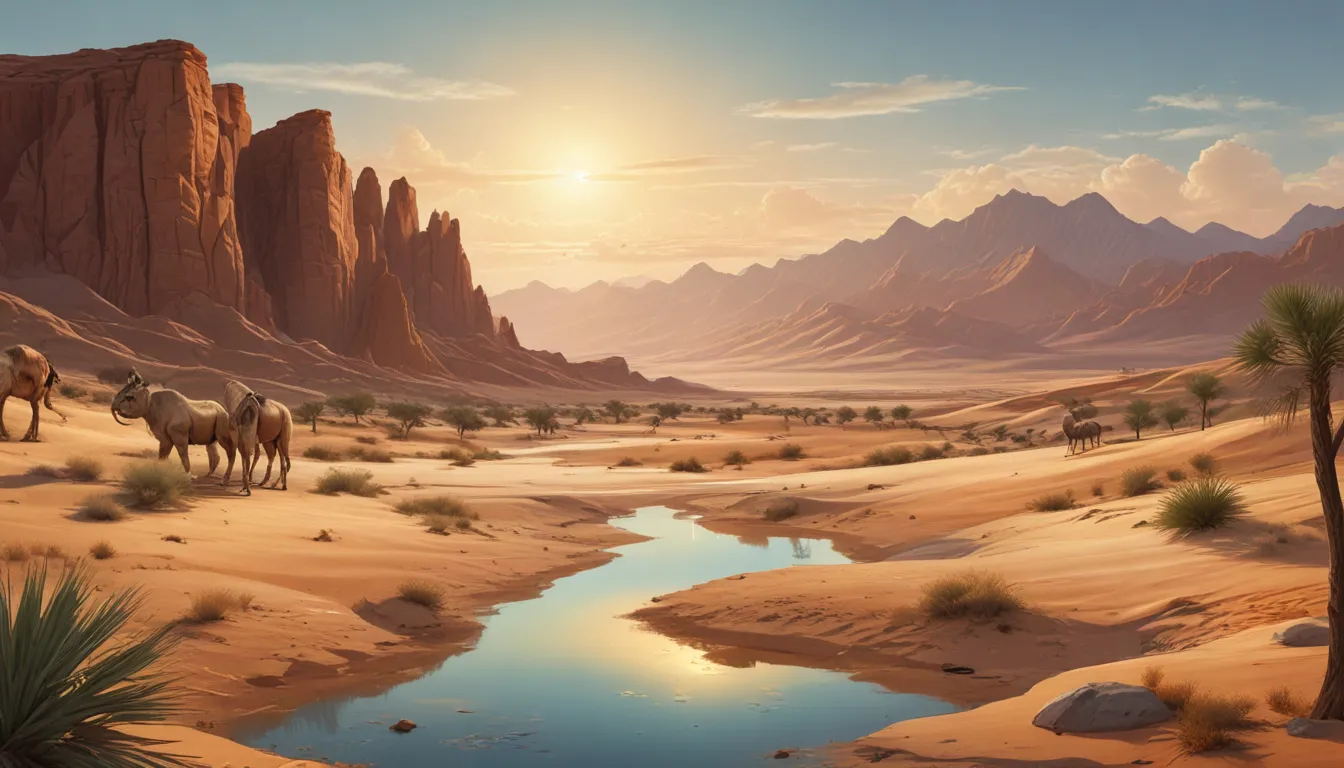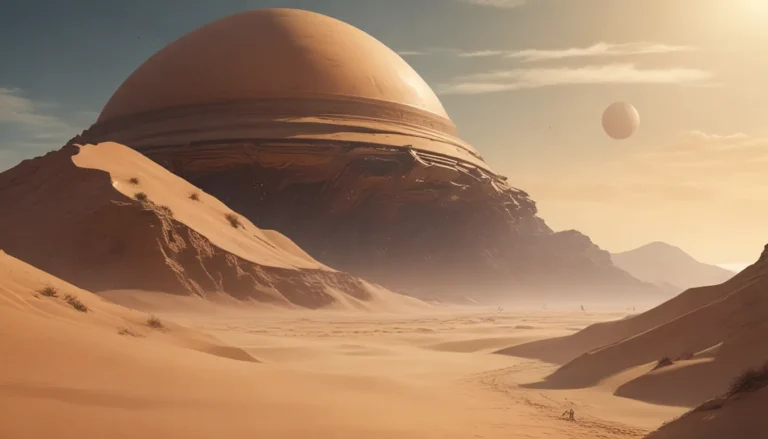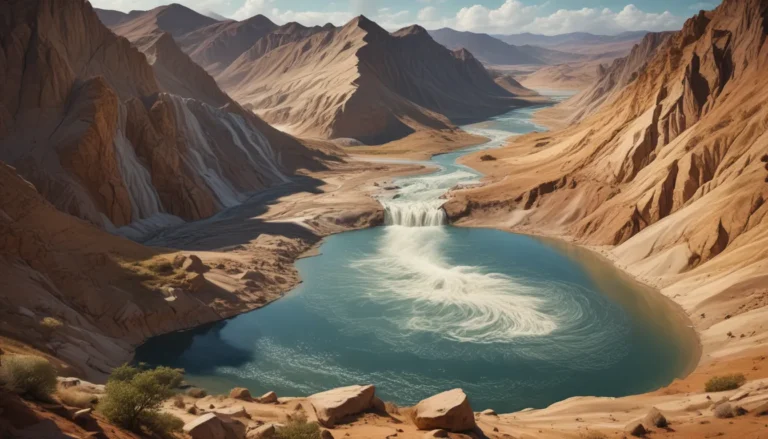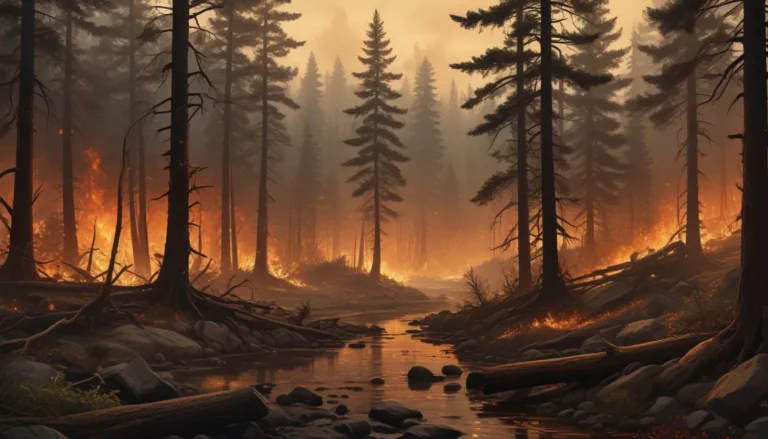A Note About Images: The images used in our articles are for illustration purposes only and may not exactly match the content. They are meant to engage readers, but the text should be relied upon for accurate information.
Have you ever been curious about the hidden treasures nestled within one of the world’s most mysterious deserts? The Taklamakan Desert isn’t just a vast expanse of sand; it’s a place teeming with astonishing tales and facts that can ignite a sense of wonder in anyone. Located in the northwest part of China, this desert holds the title of being the second largest shifting sand desert globally. But what truly sets it apart? From ancient mummies revealing stories of civilizations long gone to hidden reserves of oil and gas beneath its surface, the Taklamakan is a gold mine of secrets waiting to be discovered. Let’s embark on a journey to unveil 22 incredible facts about this enigmatic desert. Are you ready to be amazed?
Captivating Characteristics of the Taklamakan Desert
The Taklamakan Desert, situated in China’s Xinjiang Uygur Autonomous Region, stands out as one of the most captivating landscapes on Earth. Its name, believed to mean “you can get into it but can never get out,” hints at the vast, enigmatic expanse that has fascinated travelers and scientists for centuries. Here are some fascinating attributes of this desert that showcase its uniqueness:
-
Size and Location: Covering an area of over 337,000 square kilometers, the Taklamakan Desert is the second-largest shifting sand desert globally. Surrounded by the Kunlun Mountains to the south, the Pamir Mountains to the west, and the Tian Shan to the north, its location contributes to its harsh and arid climate.
-
Climate: Known for its extreme conditions, temperatures in the Taklamakan can plummet to -20°C in winter and soar to over 38°C in summer. This wide temperature range is a result of its continental climate and the rain shadow effect of surrounding mountain ranges.
-
Historical Significance: The Taklamakan Desert played a crucial role in the history of the Silk Road. Ancient traders and travelers braved this formidable desert, establishing oasis towns along its edges, which became bustling centers of commerce and cultural exchange.
Flourishing Flora and Fauna in a Harsh Environment
Despite its challenging conditions, the Taklamakan Desert is home to a variety of life forms that have adapted to thrive in this extreme environment:
-
Vegetation: Sparse vegetation can be found in the desert, primarily consisting of tamarisk and poplar trees with deep root systems that access underground water. These green patches offer a stark contrast to the endless dunes.
-
Wildlife: The desert supports unique wildlife, including the wild Bactrian camel, which has evolved to survive without fresh water for extended periods. Other species found in the area include the Tibetan antelope, wild yak, and various bird species that thrive in this arid landscape.
Unveiling the Secrets of Ancient Mummies
One of the most captivating discoveries in the Taklamakan Desert is the presence of well-preserved mummies:
-
Ancient Mummies: Archaeologists have unearthed several mummies in the desert, some dating back over 4,000 years. These mummies are exceptionally well-preserved due to the dry climate, offering valuable insights into the early inhabitants of the region.
-
Diverse Origins: Studies of these mummies have revealed a blend of European and Asian features, indicating a intricate history of migrations and cultural interactions along the Silk Road.
Modern Research and Exploration in the Taklamakan
The desert is not only a site of historical significance but also a focal point for contemporary scientific research:
-
Climate Studies: Researchers study the Taklamakan to understand desertification processes and the impacts of climate change on arid regions. Its extreme conditions provide a natural laboratory for these investigations.
-
Space Exploration Analog: Due to its remote and harsh environment, the Taklamakan has served as an analog site for space exploration missions, aiding scientists in preparing for expeditions to Mars and other celestial bodies.
-
Renewable Energy: The vast, uninhabited expanses of the Taklamakan are ideal for renewable energy projects such as solar and wind farms, contributing to China’s green energy initiatives.
Embracing Cultural Legacy and Tackling Modern Challenges
The Taklamakan Desert holds a significant place in the culture and history of the region, but it also faces contemporary challenges:
-
Cultural Heritage: For centuries, the desert has inspired myths, legends, and art, reflecting its impact on the human imagination and its importance in Silk Road history.
-
Environmental Concerns: Today, the Taklamakan faces threats from climate change, resource extraction, and infrastructure development, which could potentially alter its landscape and ecosystems.
-
Conservation Efforts: Efforts are underway to protect the desert’s unique environment and historical sites while balancing preservation with the needs of local communities and economic development.
A Final Glimpse into the Taklamakan’s Mysteries
As we wrap up our journey through the heart of the Taklamakan Desert, we are left in awe of its secrets and marvels. From ancient cities buried in sand to the ongoing battle against desertification, this desert is a testament to nature’s power and human resilience. Its unique ecosystem, rich history, and the fight for preservation underscore the importance of understanding and safeguarding such natural wonders. The Taklamakan Desert stands as a symbol of mystery, beauty, and the enduring spirit of exploration, inviting us to continue unraveling its secrets and ensuring its legacy for generations to come.
Frequently Asked Questions
-
What is the Taklamakan Desert? The Taklamakan Desert is often referred to as the “Sea of Death” and is the second-largest shifting sand desert globally, known for its extreme temperatures and scarce water sources.
-
How did the Taklamakan Desert get its name? The name “Taklamakan” is believed to originate from the Uyghur language, signifying “you can get into it but can never get out,” reflecting its perilous nature.
-
Are there oases in the Taklamakan Desert? Yes, despite its harsh conditions, the Taklamakan Desert features several oases fed by snowmelt from surrounding mountains, supporting life and ancient trade routes like parts of the Silk Road.
-
What wildlife inhabits the Taklamakan Desert? Wildlife in the Taklamakan includes resilient species like the Bactrian camel, rodents, reptiles, and birds that have adapted to survive in the arid landscape.
-
Has the Taklamakan Desert played a historical role? Absolutely! The Taklamakan Desert was a vital section of the ancient Silk Road, facilitating trade between East and West and leaving behind a legacy of cultural exchange.
-
Can plants grow in the Taklamakan Desert? Surprisingly, yes. Some plants have adapted to the harsh conditions, such as tamarisk trees and tough grasses that can survive with minimal moisture.
-
What are the main challenges for survival in the Taklamakan Desert? Surviving in the Taklamakan involves overcoming extreme temperature fluctuations, limited water sources, and the ever-present risk of being lost in the shifting sands.
Explore the Mysteries of the Taklamakan Desert
As we conclude our exploration of the enigmatic Taklamakan Desert, remember that every grain of sand holds a story. This world of extremes, beauty, and mystery awaits bold and curious minds to uncover its hidden wonders. Whether you’re fascinated by ancient civilizations, fascinated by unique ecosystems, or curious about modern research endeavors, the Taklamakan Desert offers a rich tapestry of history, culture, and natural marvels to explore. Embrace the awe and respect for this remarkable desert as you tread lightly on its sands, leaving only footprints and taking with you a sense of wonder and discovery. Long live the spirit of exploration and preservation in the heart of the Taklamakan Desert!






